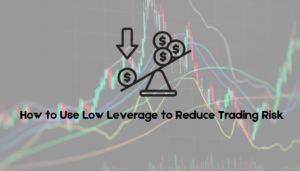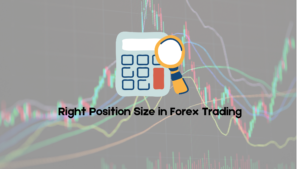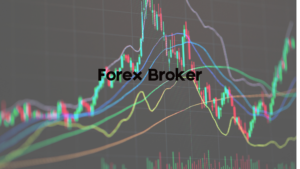In Forex trading, the “balance” refers to the amount of money available in a trading account before any positions are opened. It includes the initial deposit and any profits or losses from closed trades. For example, if you start with a $1,000 deposit and close a trade with a $200 profit, your balance will be $1,200. It’s a snapshot of your available funds based on completed transactions, providing a clear picture of the money you’ve actually earned or lost.
It is crucial to understand your available capital, as it represents the funds that can be used to open new trades or cover margin requirements. It doesn’t take into account any unrealized gains or losses from open positions, which means it doesn’t reflect the current value of your account in real-time.
How Does Balance Differ from Equity in Forex?
Balance and equity are related but distinct concepts in Forex trading. While the balance shows the amount of money in your account after closing trades, equity provides a more comprehensive view by including both closed and open positions. Equity is calculated as the balance plus or minus the floating profit or loss from open trades. For instance, if your balance is $1,000 and you have an open trade showing a floating profit of $200, your equity would be $1,200.
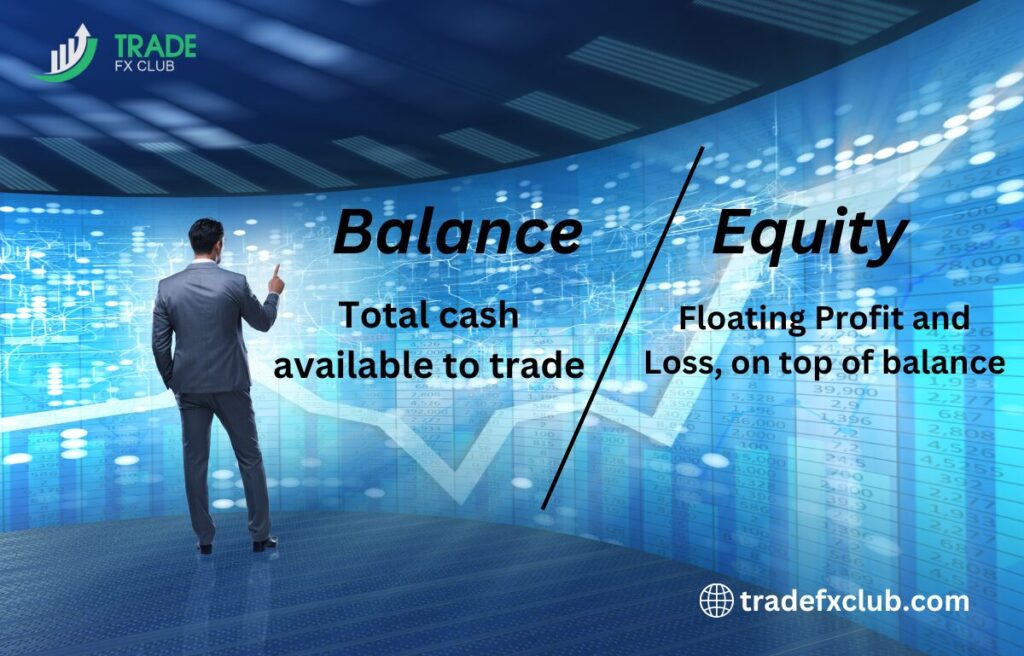
Understanding the difference between Stability and equity is essential for effective risk management. The equity reflects the current state of your account, including the impact of open trades, which can fluctuate significantly. Monitoring equity helps you gauge whether you have enough funds to cover potential losses or margin calls, whereas balance alone may not provide an accurate picture of your financial position if you have active trades.
Why is Understanding Your Forex Account Balance Important?
Understanding your Forex account Stability is important because it directly influences your trading decisions and risk management strategies. A clear grasp of your balance helps you determine how much capital is available for new trades, ensuring you don’t overextend your account or risk more than you can afford to lose. It also plays a key role in calculating your leverage and margin requirements, which are critical for maintaining control over your trades and avoiding margin calls.
Additionally, tracking your balance helps you assess your trading performance over time. By analyzing changes in your balance, you can evaluate the effectiveness of your trading strategies and make informed adjustments. Without a proper understanding of your balance, you might misjudge your financial standing, leading to potential over-leverage or uninformed trading decisions.
What Factors Influence Your Balance in Forex?
Several factors can influence your balance in Forex trading, starting with your initial deposit and any subsequent deposits or withdrawals. The amount of money you place into your account initially sets the baseline for your Stability. Any additional deposits or withdrawals directly affect this figure. For example, if you deposit an extra $500 into your account, your balance increases by that amount, while a withdrawal decreases it.
Another significant factor is the profits and losses from closed trades. When you close a trade, the profit or loss from that trade is added to or subtracted from your balance. For instance, if you close a profitable trade with a $300 gain, your balance increases by $300. Conversely, closing a losing trade with a $200 loss reduces your balance by $200. This adjustment occurs after each trade is completed, reflecting your trading performance.
Lastly, account fees and commissions can also impact it. Forex brokers often charge fees for executing trades, which can be a flat rate or a percentage of the trade size. These fees are deducted from your balance, affecting the amount of available capital you have for future trades. Regularly reviewing and understanding these costs helps ensure that your balance accurately reflects your trading costs and performance.
How Do Forex Trades Impact Your Account Balance?
Forex trades impact your account Stability through the realization of profits and losses when trades are closed. When you open a trade, the potential for profit or loss is not yet reflected in your balance, as these are considered “unrealized” until the trade is closed. Once you close a trade, the realized profit or loss from that trade is added to or subtracted from your Stability. This means your balance changes immediately based on the outcome of your trades.
For example, if you buy a currency pair at a certain price and later sell it at a higher price, the profit from this transaction is added to your balance. Conversely, if the trade results in a loss, that amount is deducted from your balance. The balance reflects only the results of completed trades, so it doesn’t include any unrealized gains or losses from open positions.
The impact of trades on your balance is a crucial factor in managing your trading capital and planning future trades. Regular monitoring of how your trades affect your balance helps you make informed decisions about how much risk to take and how to allocate your resources effectively. Understanding these dynamics allows you to adjust your strategies and maintain better control over your trading account.
What Role Does Margin Play in Your Forex Balance?
Margin plays a pivotal role in Forex trading as it determines the amount of leverage you can use, which in turn affects your account Stability. Margin is essentially a good faith deposit required to open and maintain a leveraged position. It allows you to control a larger position size with a relatively smaller amount of capital. For example, a 1% margin requirement means you need $100 to control a $10,000 position. This leverage can amplify both profits and losses, impacting your balance accordingly.
The role of margin also involves margin calls, which occur when your equity falls below the required margin level. If the market moves against your position and your equity decreases to a point where it no longer covers the required margin, you may receive a margin call from your broker. To avoid this, you would need to either deposit additional funds or close some positions. Failure to address a margin call can result in your broker automatically closing positions to protect against further losses, which can significantly impact your balance.
Understanding margin is essential for effective risk management in Forex trading. Properly managing your margin helps prevent excessive leverage and potential margin calls that could deplete your balance. By maintaining adequate margin levels and carefully managing leverage, you can protect your trading capital and ensure a more stable and controlled trading experience.
Can You Trade on a Negative Balance in Forex?
In most Forex trading accounts, you cannot trade on a negative Stability. Forex brokers typically have risk management systems in place that prevent your account from going below zero. If your trades result in significant losses, brokers usually take measures to close your positions automatically to prevent further losses and ensure your balance does not go negative. This process is known as a “margin call” or “automatic liquidation,” where the broker closes positions to cover losses and protect against a negative balance.
However, there are rare instances where negative it can occur, especially if there is extreme market volatility or gaps. In such cases, the trader may be liable for the negative balance, and the broker might require the trader to deposit additional funds to cover the deficit. To mitigate this risk, many brokers offer negative balance protection, which ensures that you cannot lose more than the amount you have deposited into your account.
How Does Leverage Affect Your Balance in Forex?
Leverage allows you to control a larger position size with a smaller amount of capital, which can significantly impact your Stability. For example, with a 100:1 leverage ratio, you can control a $10,000 position with just $100 in margin. While leverage can amplify potential profits, it also magnifies losses. If the market moves against your position, the losses can quickly erode your balance, potentially leading to margin calls or automatic liquidation of positions.
The impact of leverage on your Stability is crucial for risk management. High leverage increases the potential for substantial gains but also exposes you to greater risk. Effective leverage management involves using lower leverage ratios to minimize risk and ensure that your Stability remains within safe limits. Monitoring how leverage affects your trades helps in maintaining a Stability approach to risk and reward.
What are the Risks of a Low Balance in Forex Trading?
A low Stability in Forex trading presents several risks, primarily related to limited trading capacity and higher vulnerability to margin calls. With a low Stability, your ability to open and sustain positions is restricted, and even minor market fluctuations can have a more pronounced impact on your account. This limited buffer increases the likelihood of margin calls, where you may need to deposit additional funds or risk having your positions closed automatically by the broker.

Another risk associated with a low balance is the reduced ability to withstand adverse market movements. If your balance is insufficient to cover potential losses, you may be forced to exit trades prematurely or avoid entering new trades, which can hinder your trading strategy and opportunities. Maintaining a healthy balance helps provide a cushion against market volatility and supports more stable trading practices.
How to Maintain a Healthy Balance in Your Forex Account?
Maintaining a healthy balance in your Forex account involves careful risk management and disciplined trading practices. One key approach is to set and adhere to strict risk management rules, such as only risking a small percentage of your account balance on any single trade. This helps ensure that even if a trade results in a loss, it does not significantly impact your overall balance. For instance, risking no more than 1-2% of your balance per trade can prevent substantial losses and preserve your trading capital.
Another important aspect is regular monitoring and adjusting your trading strategies based on account performance. Review your trades, assess their impact on your Stability, and make adjustments as necessary to optimize your approach. Setting stop-loss orders and taking profits at predetermined levels can also help manage risk and protect your Stability from significant fluctuations. Consistently applying these practices helps maintain a stable and healthy Stability, allowing for more sustainable trading over the long term.
What are the Best Practices for Managing Balance in Forex?
Best practices for managing Stability in Forex include implementing a comprehensive risk management strategy and maintaining a disciplined trading approach. One effective practice is using leverage cautiously. High leverage can amplify both profits and losses, so it’s important to use it judiciously and avoid over-leveraging, which can lead to rapid depletion of your balance. Setting appropriate leverage levels that align with your risk tolerance and trading strategy is crucial for maintaining control over your account.
Additionally, regularly reviewing and adjusting your trading plan based on performance and market conditions helps manage your Stability effectively. This includes setting realistic profit targets, adjusting stop-loss orders to protect your capital, and ensuring that your trading strategy remains aligned with your risk management rules. Consistent evaluation and adaptation of your trading practices help prevent significant losses and support a healthier balance in your Forex account.
How Do Forex Brokers Protect Against Negative Balance?
Forex brokers protect against negative Stability through several risk management measures designed to prevent traders from losing more than their deposited funds. One common protection feature is negative Stability protection, which ensures that if a trader’s account balance falls below zero due to adverse market conditions, the broker absorbs the loss and the trader’s account is not held liable for the deficit. This feature helps prevent traders from owing more money than they initially deposited.
In addition to negative Stability protection, brokers often employ automatic liquidation mechanisms. If an account’s equity falls below the required margin level, the broker will automatically close positions to prevent further losses. This automatic liquidation helps to ensure that the account Stability does not become negative by mitigating the risk of excessive losses. These protective measures are crucial for maintaining the integrity of trading accounts and providing a safety net for traders.
What Tools Can Help You Monitor Your Forex Balance?
Several tools and features can help you effectively monitor your Forex Stability. One of the most commonly used tools is the trading platform provided by your broker, such as MetaTrader 4 (MT4) or MetaTrader 5 (MT5). These platforms offer real-time updates on your Stability, equity, margin levels, and other key account metrics. They also provide comprehensive reporting features that allow you to track your trading performance, including detailed records of your trading history and Stability changes.
In addition to trading platforms, many brokers offer mobile apps and web-based dashboards that allow you to monitor your Stability on the go. These apps provide real-time notifications and alerts about significant account changes, helping you stay informed about your balance and margin status even when you’re away from your primary trading setup. Utilizing these tools ensures that you can make timely decisions and manage your Stability effectively.
What is the Relationship Between Balance and Available Margin in Forex?
In Forex trading, the Stability and available margin are closely related but represent different aspects of your account. Your Stability is the total amount of funds in your account after closing all trades, while available margin refers to the portion of your balance that is not currently tied up in margin for open positions. Available margin is calculated by subtracting the margin used for open positions from your account Stability.
For example, if your account balance is $1,000 and you have $200 tied up in margin for open positions, your available margin would be $800. This available margin is what you can use to open new positions or withstand potential losses from existing trades. Understanding the relationship between balance and available margin helps you manage your trading capacity and avoid margin calls, ensuring that you have sufficient funds to cover both existing and potential trades.
How Can You Recover from a Drawdown in Your Forex Balance?
Recovering from a drawdown in your Forex balance involves a combination of strategic adjustments and disciplined trading practices. First, assess the causes of the drawdown and adjust your trading strategy accordingly. This might involve revisiting your risk management rules, such as lowering your leverage, tightening your stop-loss orders, or modifying your trading plan to better align with current market conditions.
Additionally, it’s important to implement a gradual recovery approach. Avoid the temptation to make aggressive trades in an attempt to quickly recover lost funds, as this can lead to further losses. Instead, focus on rebuilding your balance slowly by adhering to a well-defined trading plan, managing risk effectively, and making smaller, more calculated trades. Patience and discipline are key to recovering from a drawdown and returning to a stable and profitable trading position.
What Are the Strategies to Protect Your Forex Balance During Volatile Markets?
Protecting your Forex Stability during volatile markets requires implementing strategies that minimize risk and prevent significant losses. One effective strategy is to use tight stop-loss orders to limit potential losses on individual trades. By setting stop-loss levels just outside your entry points, you can protect your capital from large adverse movements and reduce the impact of volatility on your Stability.
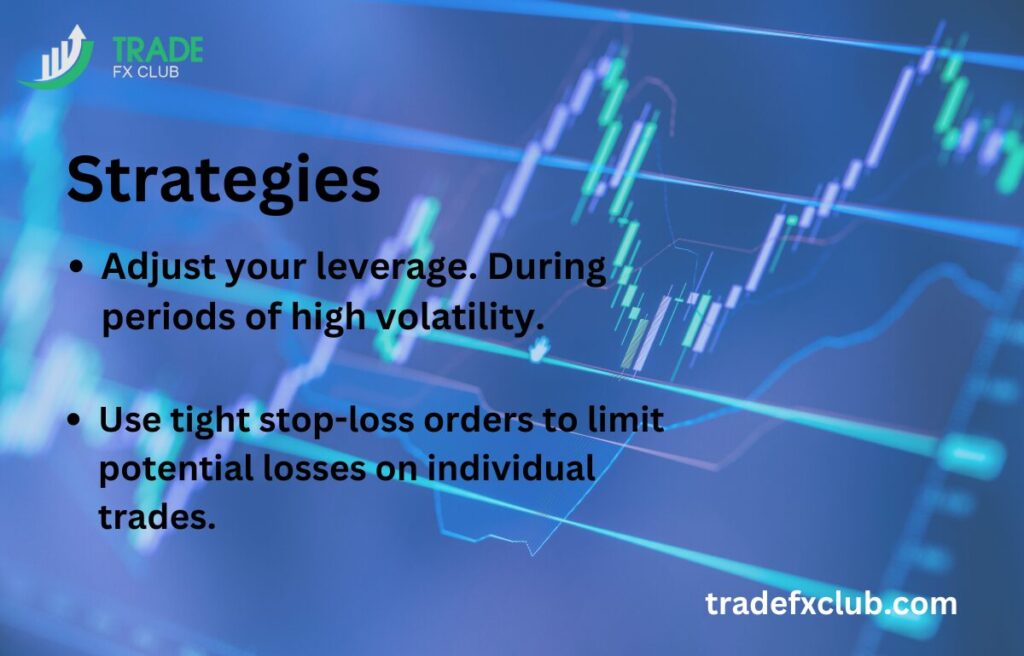
Another key strategy is to adjust your leverage. During periods of high volatility, it’s prudent to reduce your leverage to lower your exposure to market swings. Lower leverage means that you are using less borrowed capital, which can help mitigate the impact of sudden price changes on your balance. Additionally, diversifying your trades and avoiding over-concentration in a single currency pair can spread risk and provide a buffer against volatile market movements.
How Do Currency Pairs Influence Your Balance in Forex?
Currency pairs directly influence your balance in Forex trading through their price movements and volatility. Each currency pair has its own characteristics and volatility levels, which can impact the profitability or loss of your trades. For example, major currency pairs like EUR/USD tend to be less volatile compared to exotic pairs like USD/TRY. Trading more volatile pairs can lead to larger swings in your balance, both positive and negative.
The correlation between currency pairs also affects your stability. When trading multiple pairs, it’s important to understand how they interact with each other. For instance, if you have trades in both EUR/USD and USD/JPY, the performance of these pairs relative to each other can influence your overall Stability. Managing these correlations and diversifying your trades can help balance out risks and enhance the stability of your account.
What is the Impact of Overnight Positions on Your Forex Balance?
Holding positions overnight in Forex trading can impact your Stability through swap rates, also known as rollover rates. These are interest fees or credits applied to your account based on the interest rate differential between the two currencies in the pair you are trading. If you hold a position overnight, you may incur a swap fee or receive a swap credit, which will affect your balance.
Additionally, overnight positions are subject to market risks that can impact your Stability. Since Forex markets can be influenced by economic news, geopolitical events, and market sentiment, holding positions overnight exposes you to potential gaps and price movements that can lead to significant gains or losses. To manage this risk, it’s important to stay informed about upcoming events that could impact the market and use appropriate risk management techniques to protect your Stability.
How Can You Optimize Your Forex Trading Strategy to Preserve Balance?
Optimizing your Forex trading strategy to preserve your Stability involves a combination of disciplined trading practices and strategic adjustments. One effective approach is to implement a well-defined risk management plan, which includes setting clear stop-loss and take-profit levels for each trade. By defining these levels beforehand, you can manage potential losses and secure profits, thereby protecting your balance from significant swings.
Additionally, maintaining a consistent trading strategy and avoiding impulsive decisions can help preserve your balance. It’s important to stick to a trading plan that aligns with your risk tolerance and trading goals. Regularly reviewing and refining your strategy based on performance and market conditions allows you to adapt to changing environments while keeping your balance in check. Using tools such as backtesting and forward testing can help validate and improve your strategy, ensuring it effectively preserves your balance over time.
What Are the Common Mistakes that Lead to a Depleting Forex Balance?
Several common mistakes can lead to a depleting Forex Stability, with one of the most significant being poor risk management. Over-leveraging, where traders use excessive leverage relative to their account size, can amplify losses and quickly deplete a balance. Not setting stop-loss orders or using inadequate stop-loss levels also exposes traders to larger losses than anticipated, which can harm the account balance.
Another frequent mistake is overtrading, which involves making too many trades or trading too frequently without a clear strategy. This can lead to higher transaction costs and increased risk exposure, potentially resulting in a series of losing trades that erode the balance. Additionally, failing to account for market conditions or news events can result in unexpected losses. Adhering to a disciplined trading plan, avoiding emotional decision-making, and maintaining effective risk management practices are crucial for preventing these mistakes and preserving your Forex balance.
In Forex trading, maintaining a healthy Stability is crucial for long-term success. Effective Stability management involves understanding key concepts such as the difference between balance and equity, leveraging tools to monitor your account, and implementing strategies to protect against adverse market conditions. Properly managing your leverage, monitoring currency pair volatility, and being aware of the impacts of overnight positions are all essential components in safeguarding your trading capital.
Optimizing your Forex trading strategy requires a disciplined approach to risk management, including setting appropriate stop-loss and take-profit levels and avoiding over-leveraging. Regularly reviewing and refining your strategy based on performance can help preserve your balance. Additionally, being aware of common mistakes—such as poor risk management and overtrading—can prevent significant losses and ensure that your balance remains stable.
By applying these principles and practices, you can better manage your Forex account, reduce the risk of depleting your Stability, and enhance your trading performance. Understanding and utilizing effective tools and strategies will support a more sustainable and controlled trading experience.

